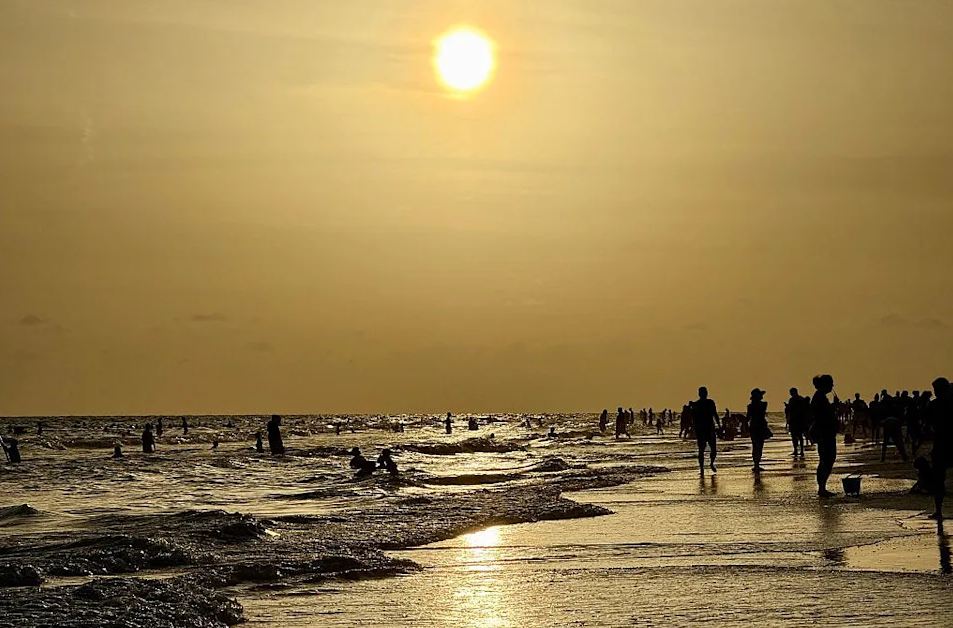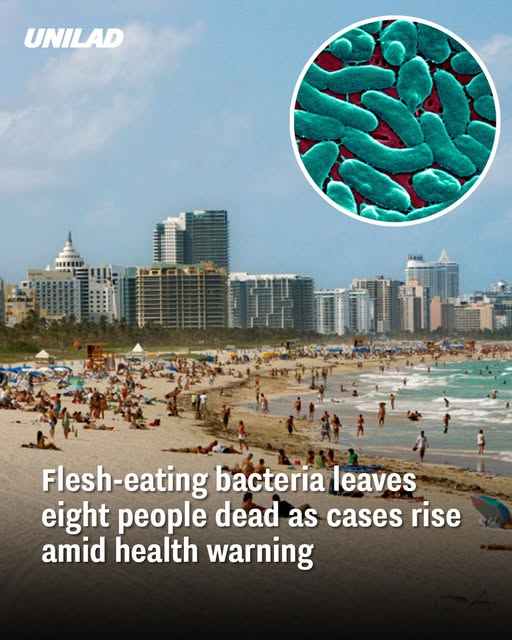U.S. Gulf Coast states are seeing an unusual spike in illnesses caused by Vibrio vulnificus a dangerous bacteria often dubbed “flesh‑eating bacteria.” At least 32 confirmed infections and 8 deaths have been reported across Louisiana, Florida, Alabama, Mississippi, and North Carolina.
What Is Vibrio vulnificus?
Vibrio vulnificus is a Gram-negative, motile bacterium that naturally thrives in warm, salty or brackish coastal waters—especially during summer and fall. It belongs to the same genus as the cholera agent, but is far more lethal in some cases.

Infection can occur in two primary ways:
- Through open wounds exposed to contaminated seawater or river water
- Via ingestion of raw or undercooked shellfish, particularly oysters
Healthy individuals may experience mild symptoms, but those with underlying conditions—such as chronic liver disease, diabetes, or compromised immunity—face a dramatically higher risk, including life-threatening bloodstream infections or necrotizing wound infections.
Clinical Presentation: From Gastrointestinal Illness to Necrosis
People who consume contaminated seafood may develop vomiting, diarrhea, abdominal pain, fever, and chills. Skin exposure through wounds can trigger rapidly spreading ulcers, redness, swelling, warmth, and blistering. In severe cases, the bacteria enter the bloodstream, leading to septic shock, extreme pain, and tissue necrosis, sometimes requiring amputation. Bloodstream infections carry a fatality rate of up to 50%, while wound infections are fatal in roughly 25–33% of cases. Symptoms often escalate within hours, making early detection and intervention key.
Why the Surge in 2025?
Health departments in Louisiana and Florida attribute the rise partly to unseasonably warm coastal waters, which favor bacterial growth. Some experts suggest climate change and extreme weather events, such as hurricanes, may be expanding the bacteria’s range and intensifying outbreaks. Louisiana’s case count—17 by late July—far exceeds its historical mid-year average of seven, and Florida’s 13 cases come from a state that typically reports 82 cases per year, with 2024 marking 19 fatalities.
Who Is Most at Risk?
While V. vulnificus infections remain rare, certain groups face significantly increased vulnerability:
- People with chronic liver disease, cancer, HIV/AIDS, diabetes
- Individuals with weakened immune systems
- Anyone with open wounds exposed to seawater or handling raw shellfish
- Older adults and those taking steroids or immunosuppressive medications
Men are also disproportionately affected, and some studies suggest estrogen may offer a protective effect for women.
Prevention: How to Protect Yourself
Public health officials recommend taking the following precautions during warm months—particularly between May and October:
- Avoid swimming or wading in salt or brackish water if you have open cuts or wounds; use waterproof bandages if necessary
- Wash wounds immediately after exposure to seawater or raw seafood
- Avoid eating raw or undercooked shellfish, especially oysters
- Handle seafood safely: wear gloves, avoid cross-contamination, and cook shellfish thoroughly (e.g., boil until shells open and continue cooking)
- High‑risk individuals should err on the side of caution and consider skipping shellfish or ocean activities altogether
Treatment and Prognosis
If infection is suspected—especially after exposure to seawater or seafood—seek medical care immediately. Diagnosis involves cultures from wound fluid, blood, or stool; prompt antibiotic therapy (typically doxycycline plus a cephalosporin or quinolone) is essential. In severe wound cases, surgical debridement or amputation may be required to control spread and save life. Delayed treatment increases risk of death or permanent tissue damage.

Takeaway
The 2025 outbreak of Vibrio vulnificus across the Gulf Coast signals a concerning uptick in deadly infections—particularly in Louisiana and Florida, where both case counts and fatalities have exceeded averages. Vigilance is vital: avoid untreated seafood and prevent open wounds from entering coastal waters. For those at higher risk, awareness and swift action could be lifesaving.

















